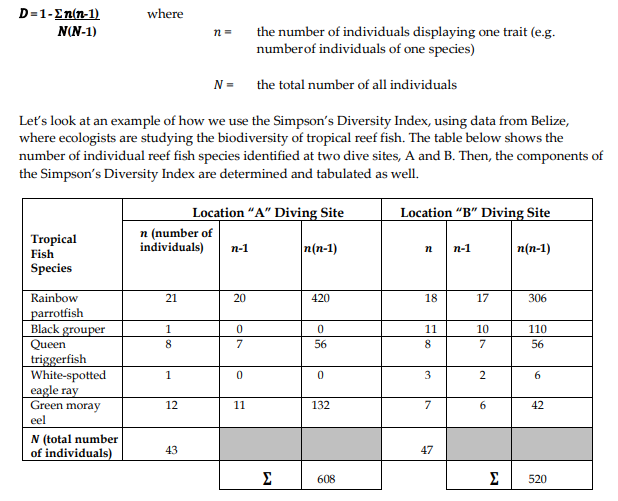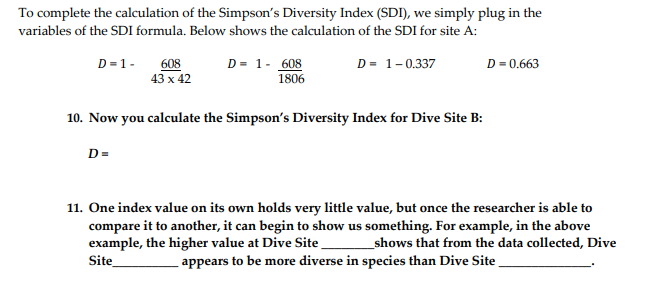Home /
Expert Answers /
Earth Sciences /
1-now-calculate-the-simpsons-diversity-index-for-dive-site-b-d-2-one-index-value-on-its-own-pa279
(Solved): 1. Now calculate the Simpsons Diversity Index for Dive Site B: D = ?2. One index value on its own ...
1. Now calculate the Simpson’s Diversity Index for Dive Site B:
D = ?
2. One index value on its own holds very little value, but once the researcher is able to compare it to another, it can begin to show us something. For example, in the above example, the higher value at Dive Site ________shows that from the data collected, Dive Site__________ appears to be more diverse in species than Dive Site ____________.


Let's look at an example of how we use the Simpson's Diversity Index, using data from Belize, where ecologists are studying the biodiversity of tropical reef fish. The table below shows the number of individual reef fish species identified at two dive sites, A and B. Then, the components of the Simpson's Diversity Index are determined and tabulated as well.
To complete the calculation of the Simpson's Diversity Index (SDI), we simply plug in the variables of the SDI formula. Below shows the calculation of the SDI for site A: 10. Now you calculate the Simpson's Diversity Index for Dive Site B: 11. One index value on its own holds very little value, but once the researcher is able to compare it to another, it can begin to show us something. For example, in the above example, the higher value at Dive Site shows that from the data collected, Dive Site appears to be more diverse in species than Dive Site
Expert Answer
1. To calculate the Simpson's Diversity Index for Dive Site B, we need to use the following formula:...